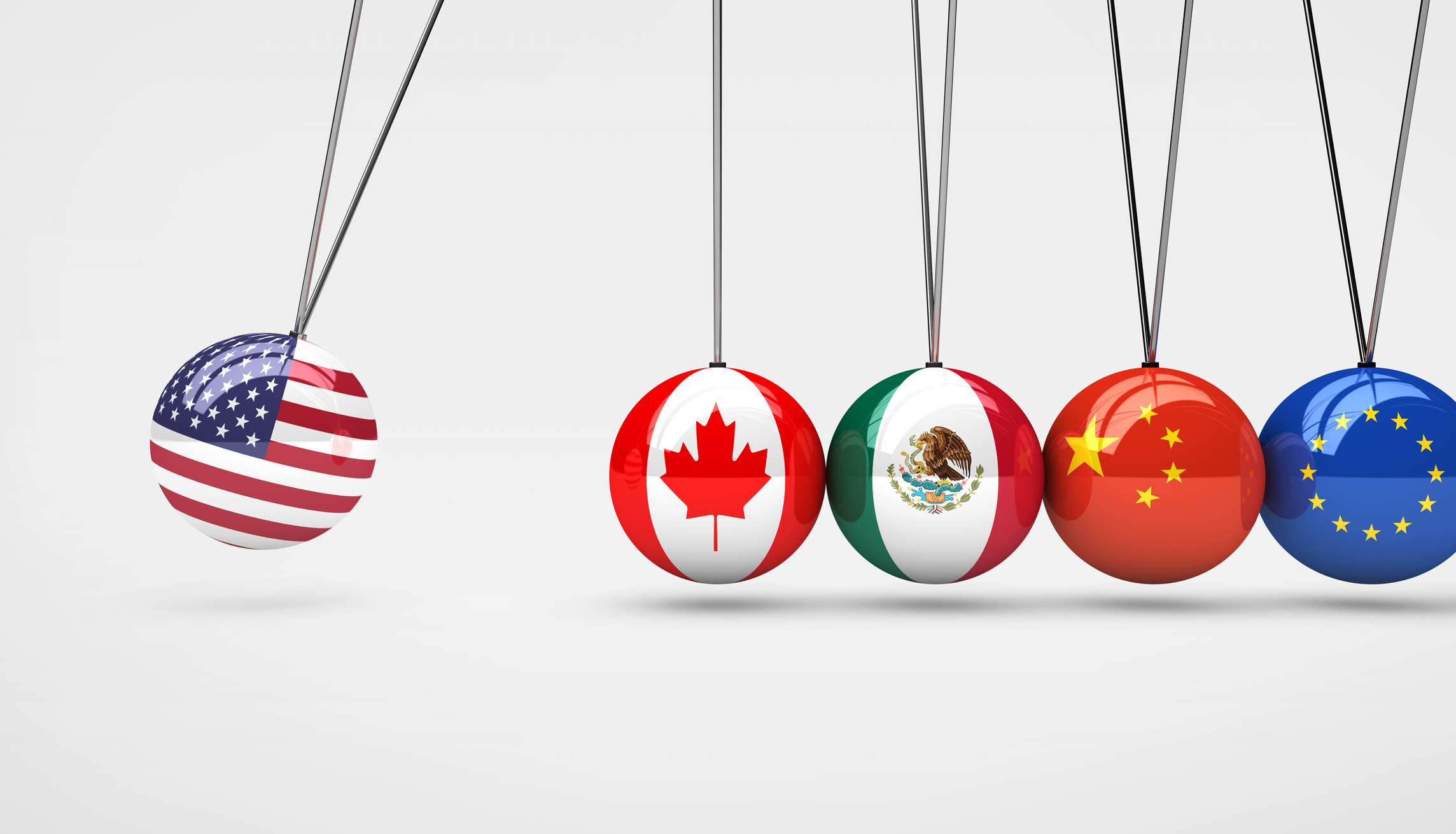Year-End Tax Planning for a Financially Healthier Retirement
Getting your tax ducks in a row for the end of the year can decrease your tax liability and make the most of your income, now and in retirement.


When you hear the words “tax planning,” you might envision the process of preparing and filing your income tax return. But what you may not realize is that there’s a whole different side of taxes that has nothing to do with going to TurboTax, H&R Block or your trusted tax preparer.
The goal of tax planning is to decrease your tax liability and maximize your income. It’s a strategy that can have a huge impact on your financial well-being throughout your working life and especially in retirement.
Why it’s important to think about tax strategy at the end of the year
Between all the holiday gatherings and shopping for gifts, reviewing your tax strategy might be the last thing on your mind. However, it should be one of the most important items on your to-do list as you close out the year.

Sign up for Kiplinger’s Free E-Newsletters
Profit and prosper with the best of expert advice on investing, taxes, retirement, personal finance and more - straight to your e-mail.
Profit and prosper with the best of expert advice - straight to your e-mail.
The end of the year is a great time to focus on your tax strategy because now that we’re in the fourth quarter of the year, you should have a good gauge of how the first three quarters of the year panned out for you. You can do an analysis of your financial situation to identify capital gains, which are simply any profit you make by selling an asset. Perhaps you sold a house or a car. Other common gains are profits earned from selling stocks and bonds. Those are assets that you need to account for.
At the end of the year, you have a good idea of where your taxes are landing, how much earned income you have and what your gains are looking like. This all helps you understand what kind of margin you’re dealing with.
Common misconceptions with tax planning
The most common assumption people make is that they’ll pay less in taxes in retirement. Many of the people I work with are surprised to find out that the company-sponsored retirement savings plans they've spent their lifetime contributing to are actually ticking time bombs when it comes to taxes. Everything ends up getting lumped into a tax-deferred 401(k) or 403(b), and then when they’re set to retire, they don’t realize all the taxes they’re about to pay on their withdrawals over the next 20 or more years. Despite the significant impact of taxes on their income, many people are unfamiliar with their tax situation and end up with a major surprise.
There are also misconceptions about the tax code because the rules that dictate how income is taxed in our country are extremely complicated. Many people don’t know what they’re required to pay and what they’re not. They might not be able to come up with a solid tax planning strategy on their own to reduce their tax burden. And because the tax code is confusing, many aren’t able to keep up with all the changes.
For example, the Tax Cuts and Jobs Act (TCJA) is set to expire at the end of 2025, switching individual income tax rates back to 2017 levels. Many people don’t understand how this will impact their tax situation or what moves they should be making now to lower that impact.
Tax strategies you can implement year-round
Even if you love what you do for a living, it’s likely you want to reach a point in your life where you can stop working and enjoy more free time to relax, spend time with family, travel and explore hobbies. To achieve this, you’ll want to start implementing key strategies to maximize your income in retirement.
1. Maximize your contributions.
The end of the year is an important time to make sure you’re supplying as much money as you can to your retirement accounts, keeping in mind contribution limits for IRA and 401(k) accounts. For 2023, you can contribute up to $22,500 in a 401(k) and as much as $6,500 in a traditional IRA or Roth IRA. If you're over the age of 50, you can contribute an additional $7,500 to your 401(k) for a total of $30,000 and up to $6,500 for a traditional or Roth IRA, plus $1,000 in catch-up contributions. Adequately contributing to your retirement accounts allows you to lower your gross income and your tax liability.
2. Make Roth conversions.
You can convert your tax-deferred accounts, like traditional IRAs and 401(k)s, to tax-free accounts such as a Roth IRA. Roth IRA conversions can be especially good when the stock market is experiencing a downturn. In some cases, this could save you thousands of dollars. Markets typically bounce back after a major dip, so when that happens, you can re-invest those dollars and avoid tax liability. If you want to get a better idea of how you should go about all of this, you can find Roth conversion calculators online or reach out to your financial adviser.
3. Use tax-loss harvesting.
Tax-loss harvesting is a non-charity-related strategy that takes place in taxable accounts. It’s when you sell an asset or security at a loss to offset the amount of capital gains tax you owe from selling profitable assets. This can help keep the value of your investment portfolio intact while alleviating tax burden, which is why it tends to be more beneficial for those in higher tax brackets. So if that’s you, then you may want to include tax-loss harvesting in your tax strategy.
4. Set up DAFs and QCDs.
If you enjoy donating to charities, you should look at ways to make the most of those donations. A donor-advised fund (DAF) is a relatively simple and flexible way of giving that allows you to support causes that are important to you. A DAF is an investment account you create that is dedicated solely to supporting your favorite charities. When you donate cash or other assets to a DAF at a public charity, you’re usually eligible to receive an immediate tax deduction. Another major benefit is that the money you place in your charitable investment account has the potential to grow, which makes more money available for giving without actually having to put more dollars into that account.
If you’re planning on retiring, it’s important to keep in mind that you are required to make withdrawals from your retirement accounts each year. These are called your required minimum distributions (RMDs), and it’s what allows you to avoid tax penalties in retirement. Setting up a qualified charitable distribution (QCD) is one way you can fulfill your yearly required RMD. A QCD is a direct transfer of funds from your IRA account to a 501(c)(3) organization. This strategy works best if you’re required to take a minimum distribution from an IRA but don’t need the money. Instead of taking the distribution as income and dealing with increased tax liability, you can give it to charity to reduce that burden.
Putting all the pieces together
The most important thing to remember when it comes to tax planning is that every situation is unique. Keep in mind that general advice is meant to serve as a guiding post and not a rulebook you have to follow to a T. No two people have the same financial situation, so it’s crucial to speak with a financial adviser and consult with your CPA to make sure you’re creating a tax strategy that will reduce your tax liability, maximize your income and ensure you are financially stable in retirement.
Related Content
Get Kiplinger Today newsletter — free
Profit and prosper with the best of Kiplinger's advice on investing, taxes, retirement, personal finance and much more. Delivered daily. Enter your email in the box and click Sign Me Up.

Ryan Marston joined Rubino & Liang in 2009 so he could assist pre-retirees and retirees with strategies that move them closer to maintaining a happy, stress-free lifestyle. Ryan is Series 65 licensed, provides financial and investment advice and personally manages his clients’ investment portfolios as a fiduciary adviser. After graduating from the University of Connecticut with a major in economics, Ryan entered the financial industry at Bank of America Investment Services.
-
 How Many IRS Commissioners Have We Gone Through This Year?
How Many IRS Commissioners Have We Gone Through This Year?IRS Who were the former commissioners, and why did they resign? Find out how IRS turnover can impact your taxes.
By Kate Schubel
-
 Trump Dials Back Most Tariffs but Targets China
Trump Dials Back Most Tariffs but Targets ChinaThe Kiplinger Letter Wall Street hopes that higher tariffs on most countries are on hold for good. But the trade war between the U.S. and China is heating up.
By Jim Patterson
-
 First 100 Days: Trump's Impact on Your Finances
First 100 Days: Trump's Impact on Your FinancesHere are some opportunities to consider regarding investing, interest rates and tax cuts as the financial landscape shifts under the new administration.
By Daniel Razvi, Esquire
-
 What Would Happen if You Put Your Tax Refund in an IRA?
What Would Happen if You Put Your Tax Refund in an IRA?Not only could you get a tax break, but the compounding effect over 35 years could turn the average refund into nearly $14,000.
By Romi Savova
-
 Children Can't Afford to Fly the Nest? Here's How to Help
Children Can't Afford to Fly the Nest? Here's How to HelpThe high cost of living means more adult children are staying at home. Here are four ways to help financially so they can eventually spread their wings.
By Kelli Kiemle, AIF®
-
 A QLAC Does So Much More Than Simply Defer Taxes
A QLAC Does So Much More Than Simply Defer TaxesHere are the multiple ways you can use a QLAC, from managing retirement risks to creating income for specific retirement needs and wants.
By Jerry Golden, Investment Adviser Representative
-
 Self-Directed Brokerage Accounts: Retirement's Hidden Gem?
Self-Directed Brokerage Accounts: Retirement's Hidden Gem?SDBAs are often overlooked, but they can offer more flexibility and growth potential inside your 401(k) when actively managed by a professional.
By Scott M. Dougan, RFC, Investment Adviser
-
 Early-Stage Startup Deals: How Does a SAFE Work?
Early-Stage Startup Deals: How Does a SAFE Work?Investing in an early-stage startup can get complicated fast, so the venture capital industry turns to other investing options. One is a SAFE.
By Murat Abdrakhmanov
-
 Should You Hire a Public Adjuster for Your Insurance Claim?
Should You Hire a Public Adjuster for Your Insurance Claim?As natural disasters strike more often, insurance clients are asking, 'What should I do, or who should I hire, if my insurance company is jerking me around?'
By H. Dennis Beaver, Esq.
-
 Tips to Help Entrepreneurs Create Self-Sustaining Businesses
Tips to Help Entrepreneurs Create Self-Sustaining BusinessesWith the right processes and people in place, a truly sustainable business can be efficiently passed on to a successor and run profitably on its own.
By Jason L Smith, CEP®, BPC